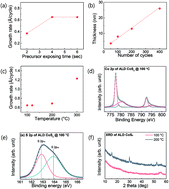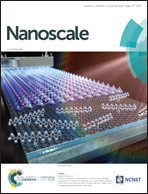Textile-based high-performance hydrogen evolution of low-temperature atomic layer deposition of cobalt sulfide†
Abstract
Hydrogen is an appealing green energy resource to meet increasing energy demands. To produce hydrogen using the hydrogen evolution reaction (HER), platinum, an expensive and scarce metal, is commonly used and plays a crucial role in maximizing catalytic performance. Transition metal chalcogenides, especially cobalt sulfides (CoSx), are considered an alternative to platinum because of their electrochemical properties, for example, low Tafel slopes and overpotentials. Here, we report a light weight, flexible textile-based HER catalyst through a low-temperature process using the atomic layer deposition (ALD) of CoSx. The electrochemical properties of HER catalysts were investigated and found to be impressive, with a low Tafel slope of 41 mV dec−1 and high exchange current density, demonstrating that these are one of the best characteristics among textile-based HER catalysts. The superb catalytic performances were attributed to the amorphous CoSx phase, confirmed by DFT calculations. This study demonstrates that the integration of HER catalysts with textiles allows the development of highly efficient hydrogen energy production systems.



 Please wait while we load your content...
Please wait while we load your content...